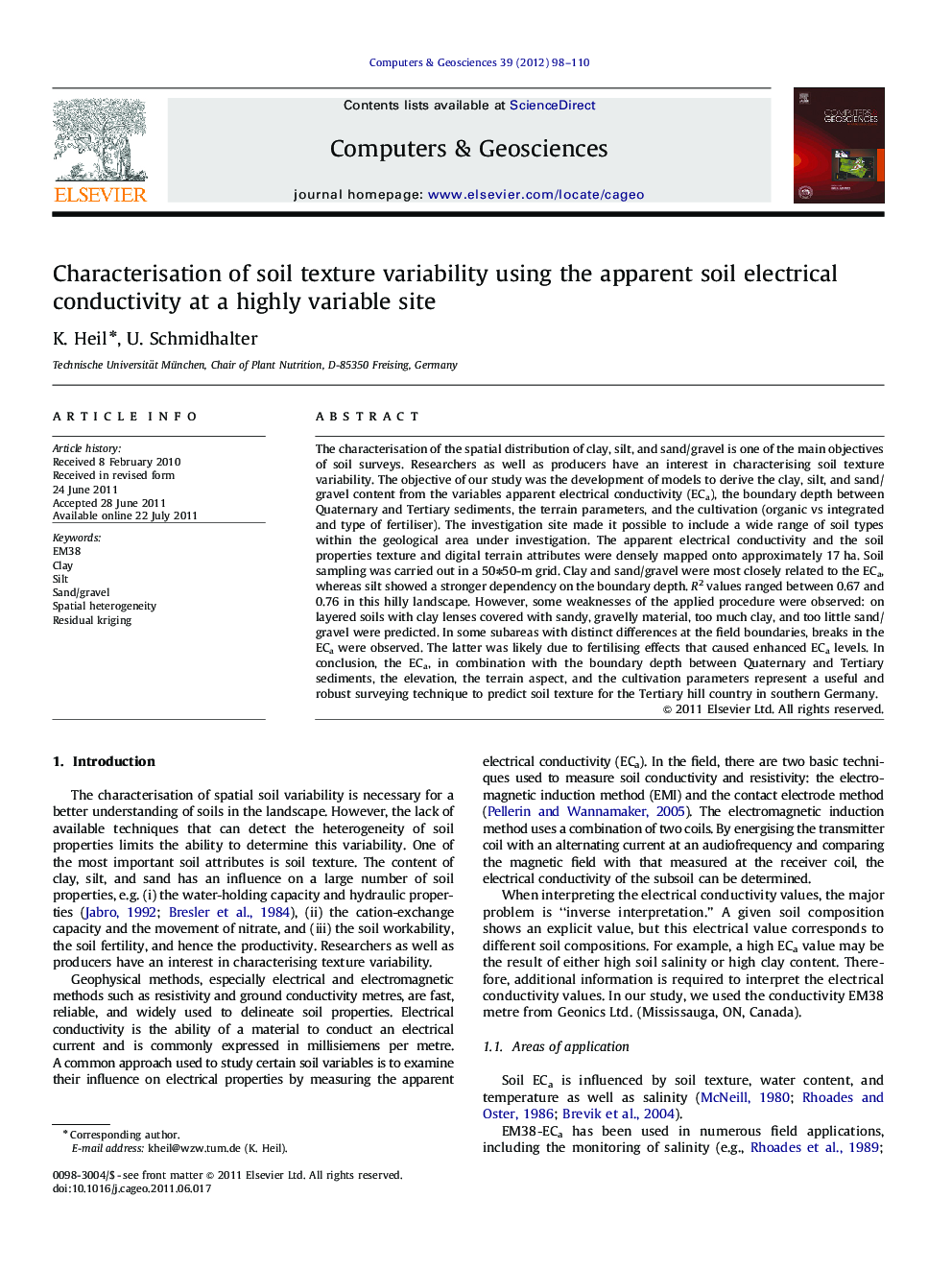| کد مقاله | کد نشریه | سال انتشار | مقاله انگلیسی | نسخه تمام متن |
|---|---|---|---|---|
| 507599 | 865135 | 2012 | 13 صفحه PDF | دانلود رایگان |

The characterisation of the spatial distribution of clay, silt, and sand/gravel is one of the main objectives of soil surveys. Researchers as well as producers have an interest in characterising soil texture variability. The objective of our study was the development of models to derive the clay, silt, and sand/gravel content from the variables apparent electrical conductivity (ECa), the boundary depth between Quaternary and Tertiary sediments, the terrain parameters, and the cultivation (organic vs integrated and type of fertiliser). The investigation site made it possible to include a wide range of soil types within the geological area under investigation. The apparent electrical conductivity and the soil properties texture and digital terrain attributes were densely mapped onto approximately 17 ha. Soil sampling was carried out in a 50⁎50-m grid. Clay and sand/gravel were most closely related to the ECa, whereas silt showed a stronger dependency on the boundary depth. R2 values ranged between 0.67 and 0.76 in this hilly landscape. However, some weaknesses of the applied procedure were observed: on layered soils with clay lenses covered with sandy, gravelly material, too much clay, and too little sand/gravel were predicted. In some subareas with distinct differences at the field boundaries, breaks in the ECa were observed. The latter was likely due to fertilising effects that caused enhanced ECa levels. In conclusion, the ECa, in combination with the boundary depth between Quaternary and Tertiary sediments, the elevation, the terrain aspect, and the cultivation parameters represent a useful and robust surveying technique to predict soil texture for the Tertiary hill country in southern Germany.
► We derived clay, silt, and sand content of fields with a wide range of soil types.
► Clay and sand/gravel were most closely related to the ECa.
► Silt showed a stronger dependency on the boundary depth.
► Weakness of the models is observed on layered soils with clay lenses under sand.
Journal: Computers & Geosciences - Volume 39, February 2012, Pages 98–110